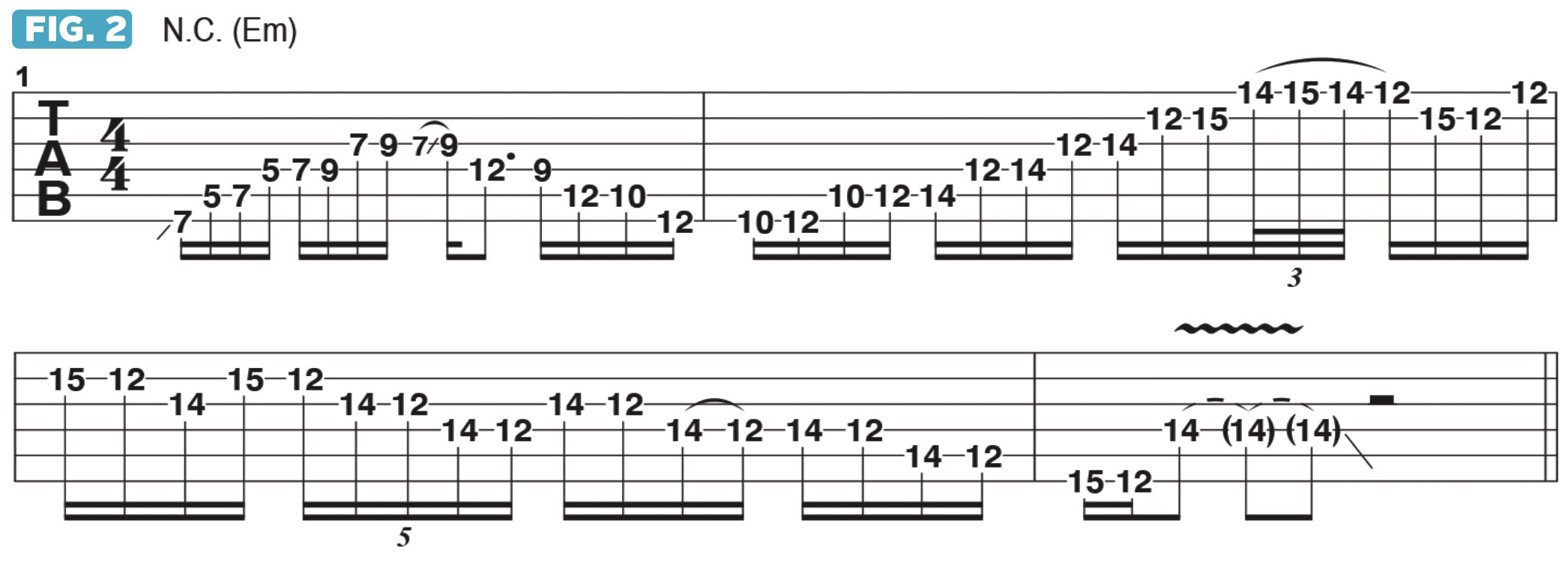Joe Bonamassa shows you how to “connect the dots” to break out of a rut
We have all been there, bored of our own playing, in the doldrums and playing the same tired licks to death. Who better than JoBo to lead us back on the right path, and see the fretboard anew?
The focus of this column is: How does one “connect the dots” when stuck in a rut, playing the same old licks over and over again? By “connecting the dots,” I mean literally the means by which we connect one scale position to the next in the development of solo-type phrases.
Every guitar player, at one time or another, goes through the syndrome of getting frustrated with playing the same phrases and ideas and realizes they need to re-imagine their approach to soloing in order to keep things fresh.
This focus on examining the ways in which licks and patterns can weave into one another has actually been more useful to me than studying music theory!
The approach that has been most helpful to me has been the quest to understand how to move up and down the fingerboard in musically useful ways. This focus on examining the ways in which licks and patterns can weave into one another has actually been more useful to me than studying music theory!
For example, if I’m playing in the key of E, I know where to go and what phrases to play, in every area of the fretboard. This level of fretboard awareness took many hours of practice to acquire, so, as always, time spent woodshedding on your instrument will reap many benefits.
Figure 1 offers a demonstration on how I might typically descend through a series of fretboard patterns and positions over the course of a long solo-type phrase. Using essentially all scale positions of E minor pentatonic (E, G, A, B, D), I begin up in 17th position, immediately shifting down to 15th and then 12th positions by the end of bar 1.
Bar 2 descends to 9th and 7th positions, and in bars 3 and 4 I shift downwards to 5th and 3rd positions. All of these shifts generally happen by moving down one extra note on a given string. It is this one-note shift that results in a new handful of fresh-sounding licks that I will have at my disposal.
In Figure 2, I use a similar approach to ascend through various positions of E minor pentatonic, beginning in 5th position and shifting up to 7th, 9th and 12th positions. The goal is to make each shift sound seamless and natural. When done correctly, the fretboard seems to open up completely to new phrases and melodic ideas.
All the latest guitar news, interviews, lessons, reviews, deals and more, direct to your inbox!
My mindset is to look at the fretboard and group everything in “boxes.” Figure 3 depicts the lowest box, as the phrases all reside between 1st and 3rd positions. Then, as shown in Figure 4, I move up to the next area of the fretboard by playing riffs that fall primarily between 5th and 7th positions.
I encourage you to expand upon this approach by continuing to move up the neck through every successive position of E minor pentatonic, while striving to make every position shift sound seamless.
As this approach becomes ingrained into your daily practice routine, you’ll never again be a Chairman of the Bored, as you continually discover new and surprising solo ideas.
- Time Clocks is out now via J&R Adventures.
Joe Bonamassa is one of the world’s most popular and successful blues-rock guitarists – not to mention a top producer and de facto ambassador of the blues (and of the guitar in general).





